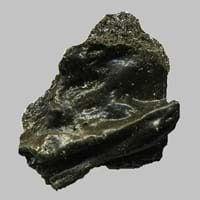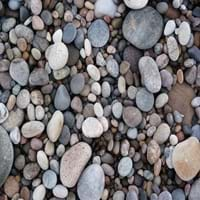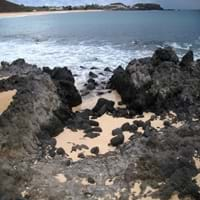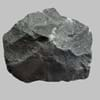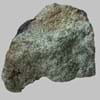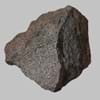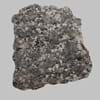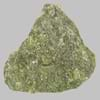Tachylite is a vitreous form of basaltic volcanic glass. This glass is formed naturally by the rapid cooling of molten basalt 0
From German Tachylite, from tachy- + Greek lutos soluble, melting 0
Durable Rock, Medium Hardness Rock 0
Coarse Grained Rock, Fine Grained Rock, Medium Grained Rock, Opaque Rock 0
Decorative Aggregates, Interior Decoration 0
As Building Stone, As Facing Stone, Garden Decoration, Paving Stone 0
Cutting Tool, Knives, Landscaping, Scrapers 0
Cemetery Markers, Creating Artwork 0
Available in Lots of Colors and Patterns, Clasts are smooth to touch, NA 0
Archaeological Significance
0
Tachylite is a fine-grained, hard rock which is a type of metasomatite, essentially altered basalt. It forms with or without crystallization, either below the surface as intrusive rocks or on the surface as extrusive rocks. 0
Burial Metamorphism, Cataclastic Metamorphism, Contact Metamorphism, Hydrothermal Metamorphism, Impact Metamorphism, Regional Metamorphism 0
Biological Weathering, Chemical Weathering, Mechanical Weathering 0
Chemical Erosion, Sea Erosion, Water Erosion, Wind Erosion 0
Medium to Fine Coarse Grained 0
Heat Resistant, Impact Resistant, Wear Resistant 0
Deposits in Eastern Continents
0
Cambodia, Russia, South Korea 0
England, Germany, Hungary, Iceland, Scotland, Sweden 0
Deposits in Western Continents
0
Deposits in Oceania Continent
0
Information about Tachylite
Rocks are naturally occurring solids which are composed of minerals & have been used by humans since ages. From Stone Age, rocks are used for various purposes. Also, the metals and minerals found in rock play an important role in our life. Get to know all the Tachylite Uses. We have provided you with all information about Tachylite rock here. Tachylite is a vitreous form of basaltic volcanic glass. This glass is formed naturally by the rapid cooling of molten basalt. Tachylite is available in black, dark brown colors. The streak of a rock is the color of powder produced when it is dragged across an unweathered surface. The streak of Tachylite is vermilion. Get to know more about Tachylite rock and characteristics of Tachylite rock in the next sections.
